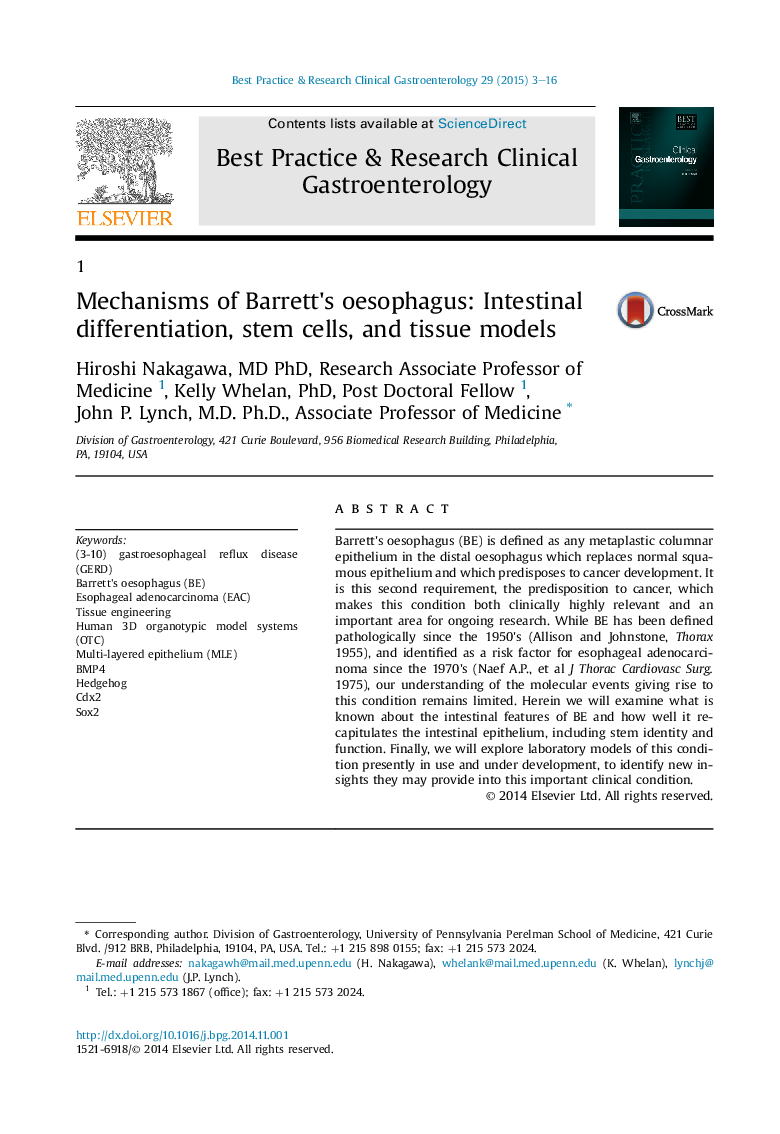| Article ID | Journal | Published Year | Pages | File Type |
|---|---|---|---|---|
| 3254406 | Best Practice & Research Clinical Gastroenterology | 2015 | 14 Pages |
Barrett's oesophagus (BE) is defined as any metaplastic columnar epithelium in the distal oesophagus which replaces normal squamous epithelium and which predisposes to cancer development. It is this second requirement, the predisposition to cancer, which makes this condition both clinically highly relevant and an important area for ongoing research. While BE has been defined pathologically since the 1950's (Allison and Johnstone, Thorax 1955), and identified as a risk factor for esophageal adenocarcinoma since the 1970's (Naef A.P., et al J Thorac Cardiovasc Surg. 1975), our understanding of the molecular events giving rise to this condition remains limited. Herein we will examine what is known about the intestinal features of BE and how well it recapitulates the intestinal epithelium, including stem identity and function. Finally, we will explore laboratory models of this condition presently in use and under development, to identify new insights they may provide into this important clinical condition.
